For much of the year, foxes are difficult to see in the wild. But when their cubs start emerging above ground between late April and July, they are vocal and more active during the day, hunting, playing or just relaxing in the sun.
You may also hear them in mid-winter, when the vixens shriek at night-time during the breeding season.
Here Stephen Harris and Ben Hoare describes some of the behaviour you are likely to see from red foxes.
How to identify if a fox is male or female
Dog foxes (males) and vixens (females) are hard to tell apart, though dogs are generally about one fifth heavier. The dogs also have broader, slightly more domed heads. During winter (when mating), the male’s testes visibly protrude between his hindlegs, but these regress and are hard to see in summer.
When lactating, the vixen’s eight teats are obvious, and her belly fur is brick red (it’s normally white or grey). In late winter, the vixen digs out several potential breeding earths. In rural areas, these will be in banks, at woodland edges or under piles of sticks or drystone walls. In urban areas, they can also be in or under sheds and buildings.
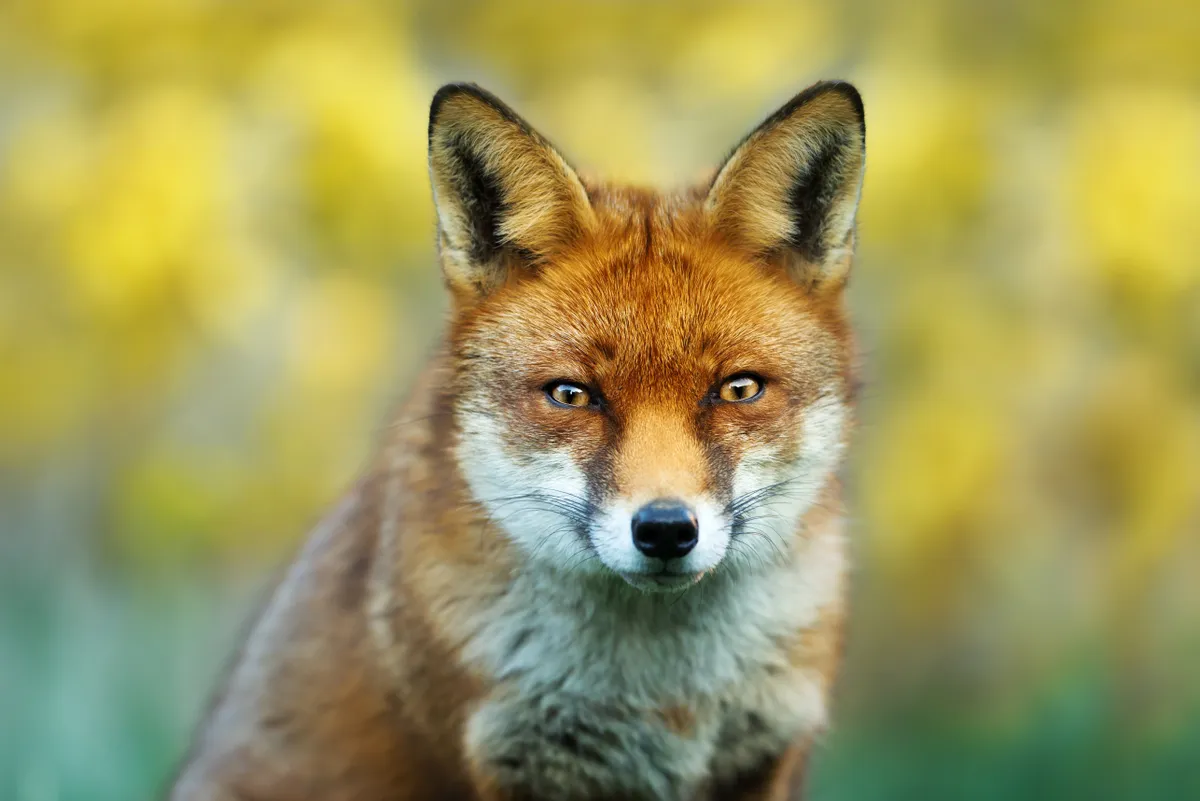
How to identify fox droppings
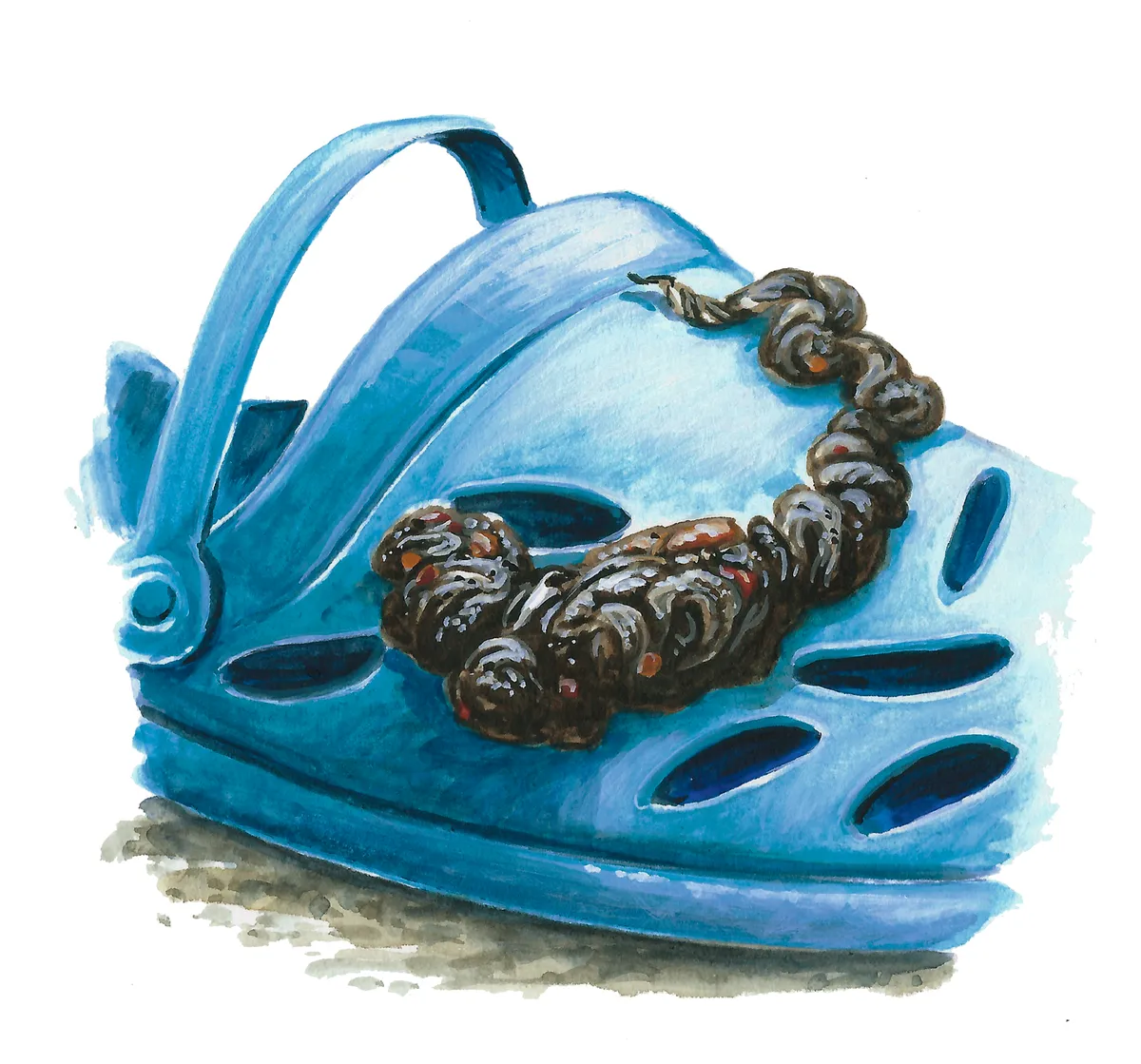
Size: 5-20cm
Fox poo is usually long and twisted, and if you look closely, you might be able to spot the remains of what it's been eating – such as berries, bone, hair, and grasses. Fox droppings are often left to mark territory on dead animals, shoes and garden toys.
In urban areas (where they eat a lot of meat, bread and bird seeds), fox scat tends to look like a small dog dropping, while in rural areas (where they eat more birds and mammals), fox poo is usually twisted at one end.
When fox poo is fresh, it's best distinguished by a very characteristic 'foxy' smell.
Do foxes live alone or in groups?
Foxes live in social groups – three or four adults are quite common (though 10 were recorded in one Bristol group). These consist of equal numbers of dogs and vixens.
Generally, only one vixen breeds, but occasionally up to three do. Cubs can be reared separately, but may also be pooled together in one large litter.
Mid-March is the peak time for births. The average litter size is four or five, but eight is not uncommon. For the first few weeks, the vixen spends most of her time with the cubs and relies on the male to bring her food.
There is no obvious sign as to which earth has been used for breeding until the cubs emerge at about four weeks old – usually late April or early May. Food remains then accumulate around and inside the earth.
Unless disturbed, cubs stay in their natal earth until early June, though they may abandon it earlier in hot weather. From early June, they lie up above ground at rendez-vous sites in dense cover such as a bramble or thorn patch or in piles of rubbish.
When do foxes mate?
On January and February nights you may be woken by alarming blood curdling screams – a sign that the fox mating season is here again. The shrieking is usually vixens in heat (they’re only receptive for 20 days), but you should also listen out for the ‘hup-hup-hup’ triple-barks of dog foxes, or males.
Though foxes can be vocal year-round, they’re far more so now and the calls seem to travel farther at night in the still winter air. Dog foxes roam widely to locate females to mate with, often straying outside their familiar home ranges – sadly, you might notice an increase in roadkill at this time of year.
Wandering foxes are also less likely to visit places where they are accustomed to being fed, so your garden may well feel strangely fox-free for a while. When a dog fox finds a receptive vixen, he will stay close by – if you spot a pair of foxes in January, this is probably the explanation. Also look out for aggressive encounters between rival dog foxes.
Here are the four main types of behaviour you may encounter:
1
Fighting
In the mating season you may see rival males chase each other, make open-mouth threat displays or rear up to fight. At other times scuffles tend to involve cubs (May to July) or fully grown young and adults (September to November).

2
Shadowing
Males trail receptive females to ensure they don’t miss their partner’s brief window of peak receptivity, which can last just 72 hours.
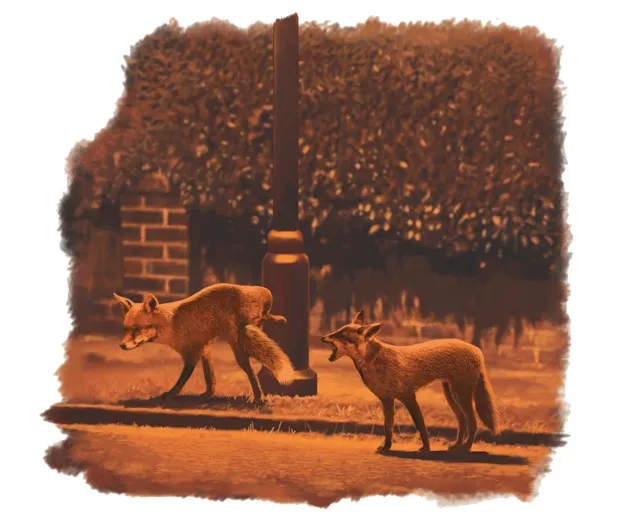
3
Nuzzling
As the female’s oestrus (ovulation date) nears, the male may nuzzle or groom her. He often also lifts his tail high in excitement.
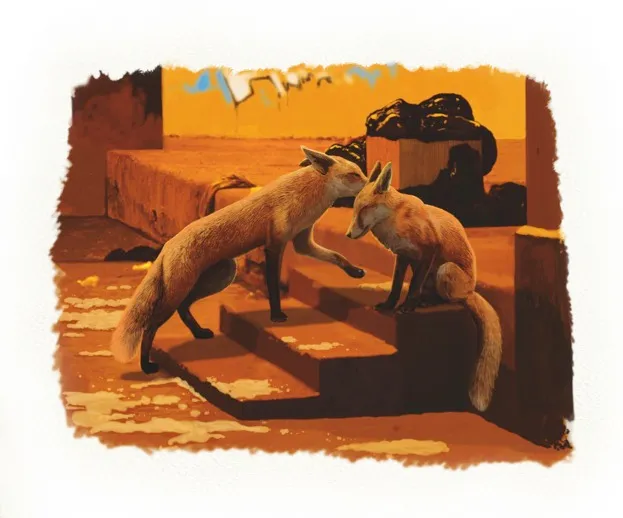
4
Coupling
After the male’s initial approaches are rebuffed, mating takes place several times. It can be hasty, or the pair may lock for half an hour or more.
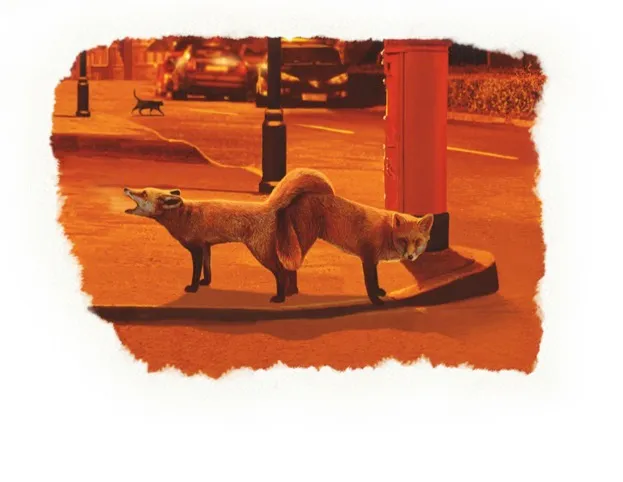
How quickly do fox cubs grow?
Newborn fox cubs are blind, deaf, dark-grey in colour and weigh about 120g.
After 14 days, their eyes open. Their pupils are slate-blue. Guard hairs appear, giving cubs a fuzzy appearance. They have small, floppy ears and weigh about 350g.
After four weeks, the cub’s pupils are grey flecked with brown. The muzzle starts to lengthen. White fur appears around the mouth and patches of red on the face. The coat is still woolly, but the ears are now erect.
After eight weeks, the pupils become amber-coloured and the cub’s face approaches adult proportions. Its fur is largely adult colour but still looks woolly
Throughout the summer, cubs are very similar to adults but have thinner coats and a lankier appearance. They become indistinguishable from the adults by late September or early October, once their winter coats are fully grown.
From late September, the family group breaks up and some or all of the cubs disperse.
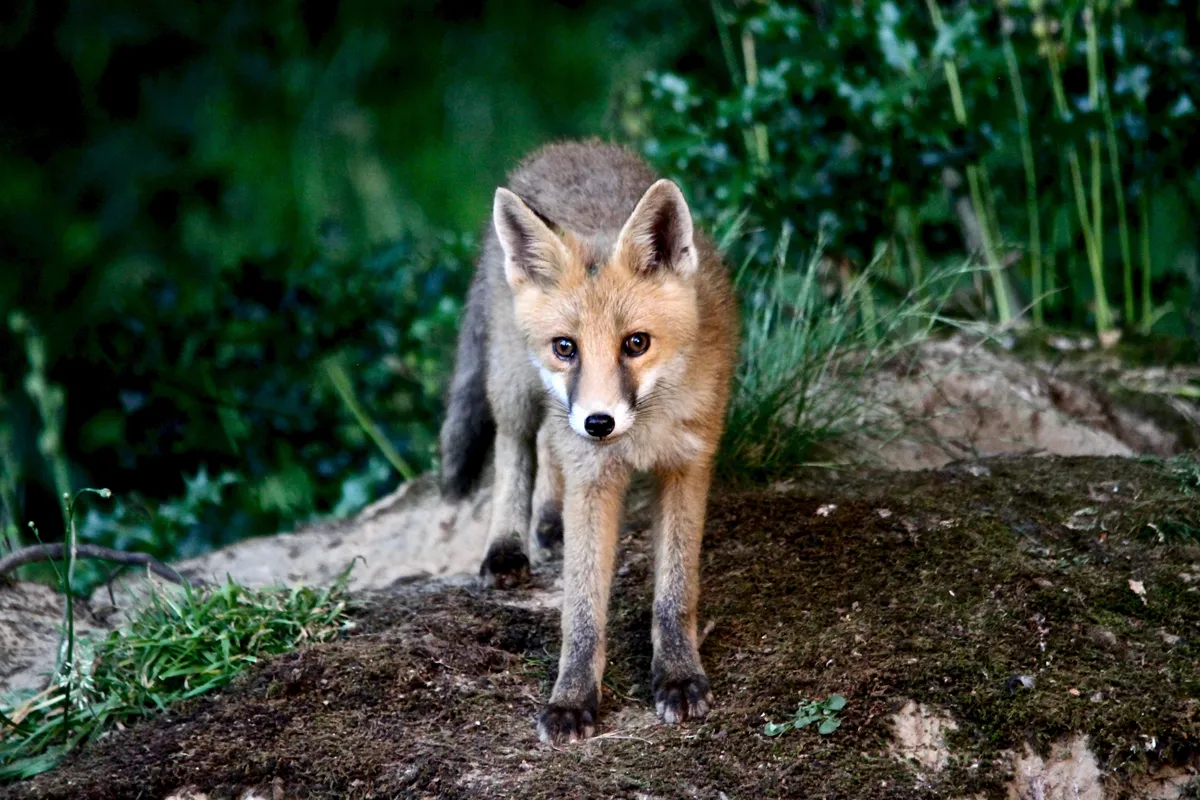
What do fox cubs eat?
Cubs are suckled for the first four weeks, then progressively weaned until seven weeks old (though they are occasionally still suckling at 14 weeks).
They hunt earthworms and insects as soon as they emerge from their earth (at four weeks), but these form only a very small proportion of their diet.
Both dogs and vixens provision their cubs, who beg for food by rushing over excitedly. They hold their bodies low to the ground, wag their tails rapidly, nuzzle the adult’s mouth and whine. Adults bring back larger mammals and birds for the cubs, but they themselves feed more on small prey such as mice and voles.
Cubs are cautious until they start foraging for themselves.
In gardens, they may hide in flowerbeds while the adults collect food. Youngsters have high energy-needs – adults caring for a litter can look very thin. Cubs fight over access to food. They arch their backs, raise their hackles and hold their heads low while making high-pitched ‘kek-kek-kekking’ noises. Tugs-of-war help to break open carcasses – the cubs’ teeth are too weak to tackle intact prey.
Cubs start to forage for themselves in July. Thereafter, they compete with adults for food, who may push them off a kill. They tend to go for easy-to-catch prey such as insects and earthworms while slowly developing their hunting skills.
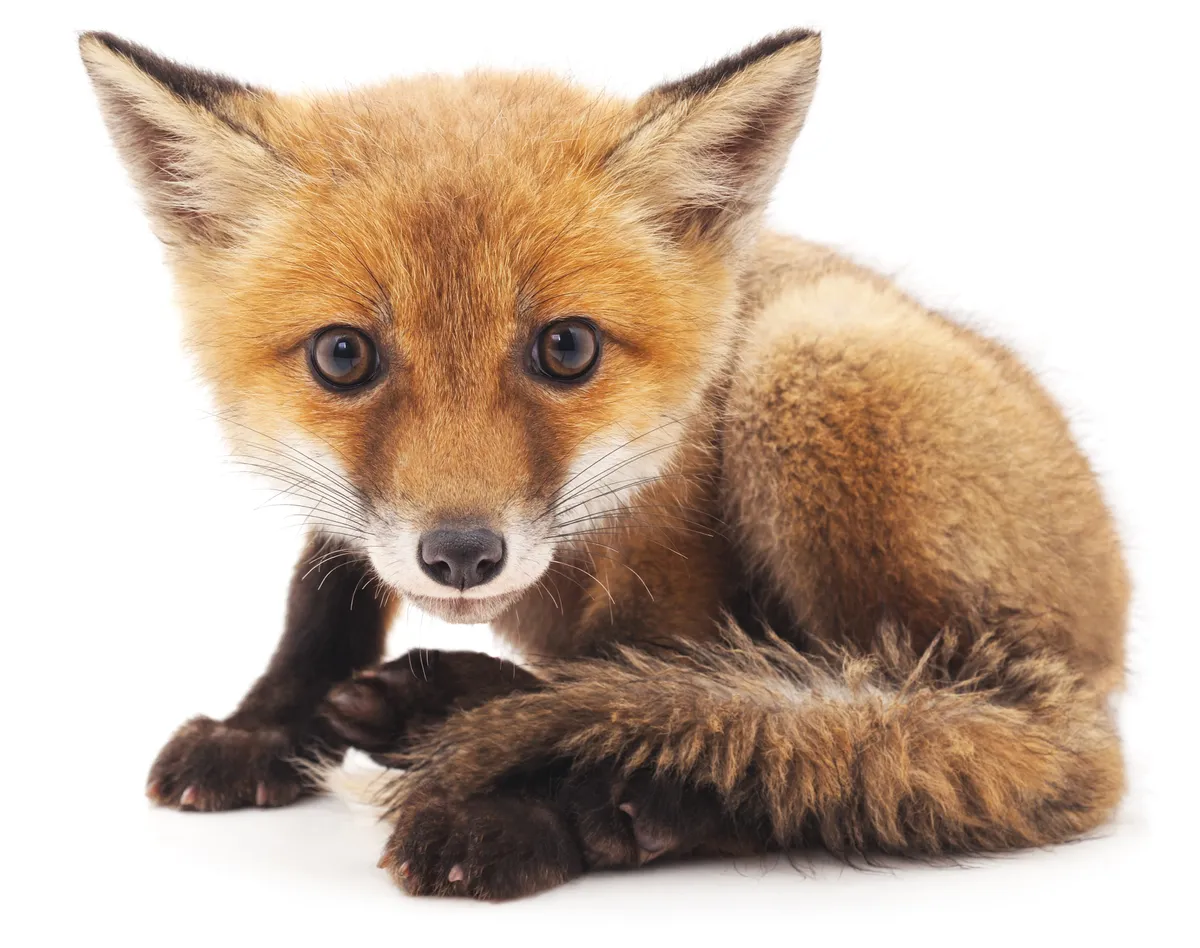
Are some foxes more dominant than others?
There is a strict dominance hierarchy within social groups. A subordinate approaches a dominant with its body held low. It often crouches or even wriggles on its back at the feet of the dominant animal in a puppy-like appeasement gesture.
Cubs start to establish a dominance hierarchy even before they emerge from their earth, when fights are particularly vicious. About 20 per cent of cubs die underground, often as a result of spats with siblings. Dead cubs are generally consumed by littermates. Hierarchy is largely established within seven or eight weeks, and thereafter serious fights are rare.
Dominant cubs have preferential access to food and thus grow much faster. In larger litters, dominant cubs may look four weeks older than subordinates, often leading to the mistaken impression of two pooled litters. Dominant cubs also receive more social grooming from adults, are more strongly integrated into the social group and less likely to disperse in autumn.
As cubs get older, they fight by standing on their hindlegs and placing their forelegs on their opponent’s chest. They try to push each other over in a trial of strength. The loser is often chased and may be badly bitten on the rump or base of the tail.
Tension increases as summer progresses because October marks the onset of dispersal, when fox families start to break up.
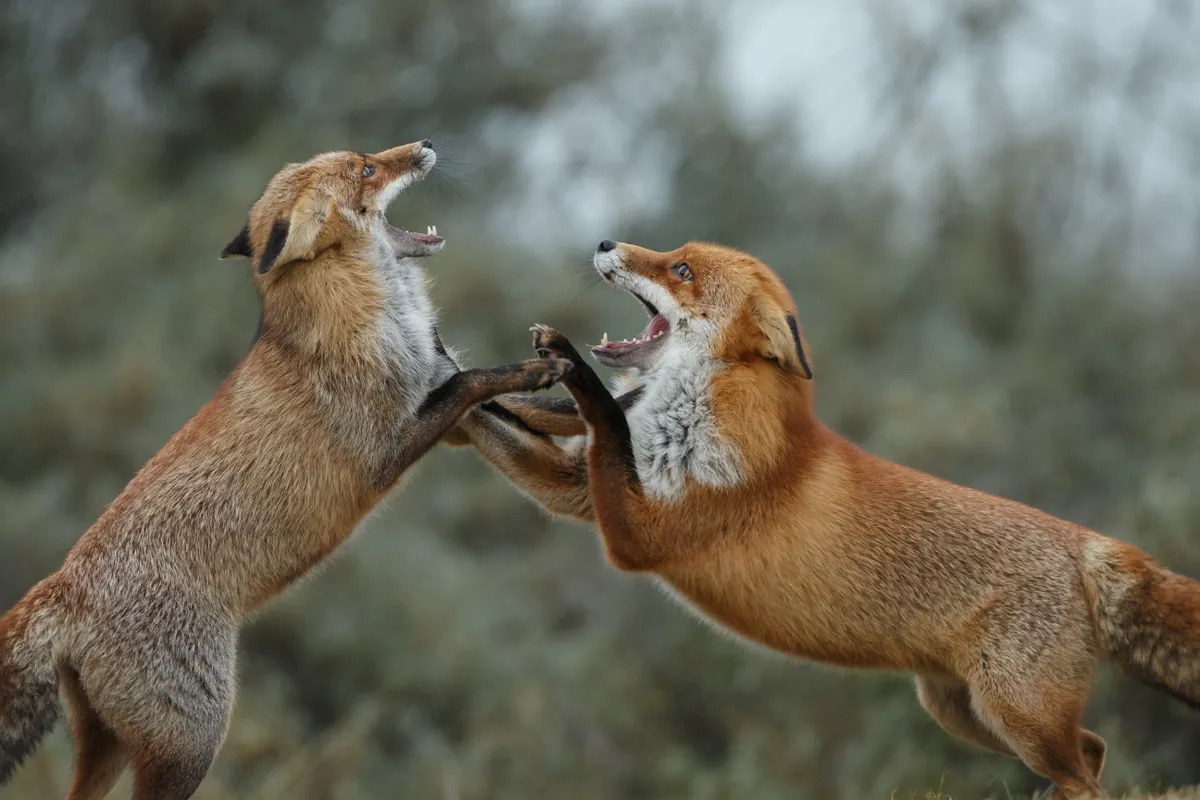
Foxes often fight by standing on their hind legs, forefeet on each other’s shoulders or chests, with heads back and mouths open. This can be ritualised, with the ears erect, or serious, with the ears held against the side of the head.
Bites on the face or neck are rarely severe, but one to a front foot can be serious, because it may cause a cub to limp, reducing its ability to compete with its littermates for food.
Even worse, a bite on the foot may become infected, which can prove fatal.
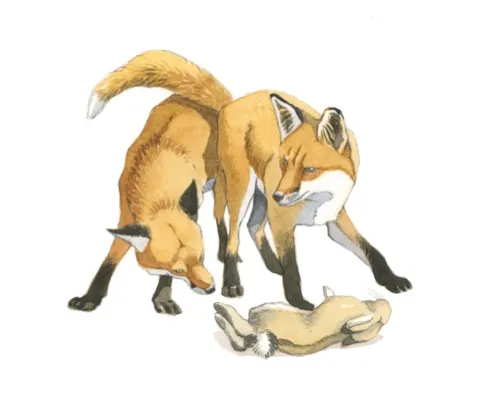
What is body slamming?
Foxes also ‘body slam’ opponents off food: a dominant cub will rush towards a subordinate that is eating, slam its rump into its rival and knock it out of the way. It is less dramatic than fighting, but equally successful in the battle for supremacy.
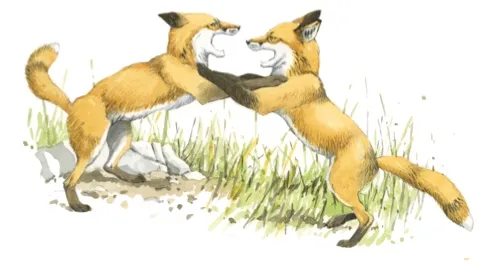
Foxes reach their adult size by autumn, and their size at this time determines their fate as an adult.
Bigger vixens usually stay at home, while bigger dog foxes generally disperse and find new territories.
Larger dog foxes have larger ranges and sire more cubs. So it is hardly surprising that fox cubs spend so much of the summer squabbling over food.
Main image: Urban fox visiting a garden © DGWildlife/Getty